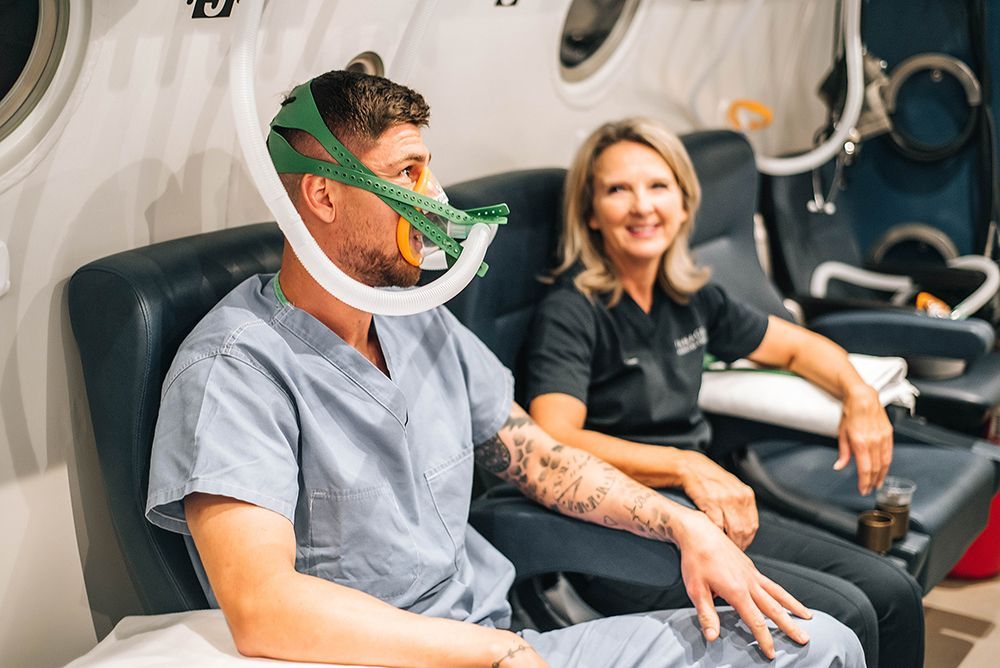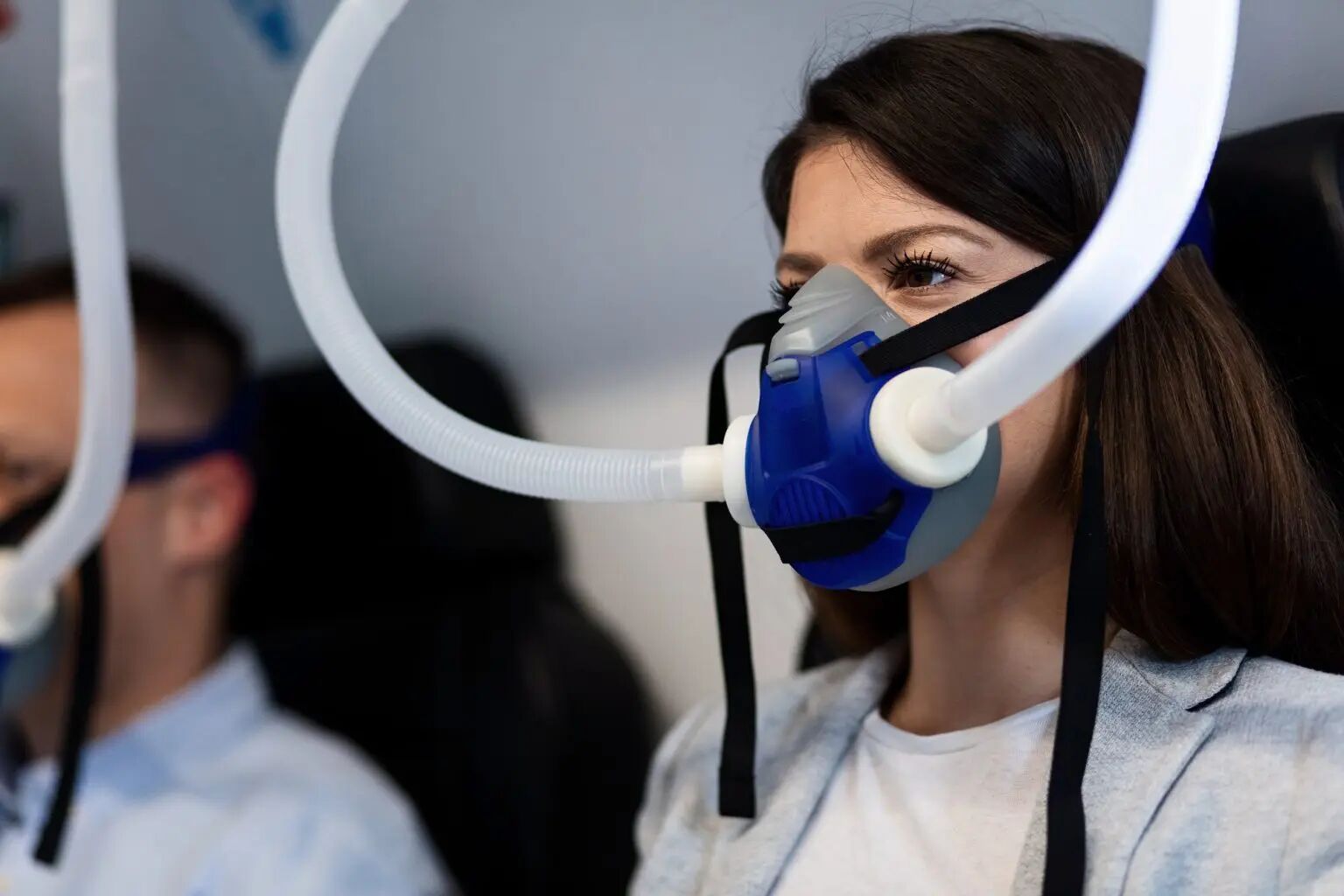HBOT Safety, Side Effects, and the Latest Research
This is a subtitle for your new post

Introduction
Hyperbaric Oxygen Therapy (HBOT) has gained widespread recognition as a clinically approved treatment for a variety of medical conditions, including wound healing, neurological recovery, and inflammation reduction. While HBOT is generally considered safe and well-tolerated, it’s important to understand its safety profile, potential side effects, and the latest research on its efficacy.
At Panacea Medical Center in Cyprus, patient safety is our top priority. This article provides an evidence-based review of HBOT safety, covering common side effects, rare risks, and clinical guidelines to ensure a well-informed treatment experience.
How HBOT Works and Why Safety Matters
HBOT involves breathing 100% oxygen in a pressurized chamber, increasing oxygen levels in the blood and tissues to enhance healing and reduce inflammation. The treatment follows strict medical guidelines to ensure safety, as high-pressure oxygen exposure must be carefully controlled.
🔬 Key Research: A systematic review published in The Lancet (2022) found that when HBOT is properly administered, it is a low-risk, highly beneficial therapy for patients with chronic wounds, brain injuries, and decompression sickness (Thom et al., 2022).
Common Side Effects of HBOT
While HBOT is non-invasive and well-tolerated, some patients may experience mild side effects, most of which resolve quickly.
1. Ear Barotrauma (Pressure-Related Ear Discomfort)
📌
What Happens? During HBOT, changes in pressure can
affect the middle ear, leading to sensations of ear fullness or mild discomfort.
📌
How to Prevent It:
✅
Equalization techniques (swallowing, yawning, chewing gum)
✅
Slow pressurization adjustments in the chamber
📌
Research: A 2021 study in Undersea & Hyperbaric Medicine found that
ear barotrauma occurs in fewer than 2% of HBOT patients and is
easily preventable with proper ear-clearing techniques.
2. Oxygen Toxicity (Pulmonary & Neurological Effects)
📌
What Happens? Excessive oxygen exposure
can overstimulate the nervous system, leading to rare cases of
dizziness, mild vision changes, or seizures.
📌
How to Prevent It:
✅ HBOT sessions are carefully
timed and monitored to prevent overexposure.
✅ Patients with
seizure history are screened before treatment.
📌
Research: A 2020 Journal of Intensive Care Medicine study confirmed that
oxygen toxicity is extremely rare in medically supervised HBOT settings (Thom et al., 2020).
3. Temporary Fatigue or Lightheadedness
📌
What Happens? Some patients feel
tired after HBOT sessions due to
increased oxygen metabolism and temporary shifts in blood circulation.
📌
How to Prevent It:
✅
Hydrate well before and after therapy.
✅ Get
adequate rest after HBOT sessions.
📌
Research: A Frontiers in Physiology (2022) study found that
HBOT-induced fatigue typically lasts less than 24 hours and is related to
temporary metabolic adjustments.
4. Claustrophobia in Hyperbaric Chambers
📌
What Happens? Some patients feel anxious inside
monoplace chambers due to
enclosed space constraints.
📌
How to Prevent It:
✅
Transparent chambers reduce visual discomfort.
✅
Breathing exercises and guided relaxation techniques help ease anxiety.
📌
Panacea Medical Center Approach: We offer
personalized comfort strategies and use
spacious chambers to accommodate patients with claustrophobia.
Serious but Rare Risks of HBOT
While complications are extremely rare, certain patients require additional screening before undergoing HBOT.
1. Pneumothorax (Lung Collapse – Extremely Rare)
📌
What Happens? HBOT increases
lung expansion, which could
exacerbate pre-existing lung conditions in high-risk patients.
📌
Who Is at Risk? Patients with
untreated pneumothorax (collapsed lung) or severe COPD.
📌
How to Prevent It:
✅
Pre-treatment lung function screening is mandatory for high-risk patients.
2. Hypoglycemia in Diabetic Patients
📌
What Happens? HBOT may
increase insulin sensitivity, leading to a
temporary drop in blood sugar levels.
📌
How to Prevent It:
✅ Diabetic patients should
monitor blood sugar before and after HBOT.
✅ Adjustments to
insulin dosage may be required for some patients.
📌
Research: A Diabetes Care (2021) study found that
patients with diabetes undergoing HBOT experienced mild glucose fluctuations but no long-term adverse effects.
3. Fire Hazard Risks (Extremely Rare, Preventable)
📌
What Happens? Oxygen is highly flammable, requiring
strict no-spark environments inside HBOT chambers.
📌
How to Prevent It:
✅ No
electronic devices, synthetic fabrics, or open flames in the chamber.
✅ Panacea Medical Center follows
NFPA (National Fire Protection Association) guidelines for HBOT safety.
HBOT Safety Guidelines and Patient Screening
At Panacea Medical Center, patient safety is our top priority. Before starting HBOT, each patient undergoes:
🔎
Medical Evaluation: Screening for
lung health, blood pressure, and contraindications.
📊
Personalized Treatment Plan: Adjusting
pressure levels and session duration based on medical needs.
🩺
Continuous Monitoring: Patients are
closely observed by certified medical staff during treatment.
📌 Official Guidelines: The Undersea and Hyperbaric Medical Society (UHMS) and FDA establish strict HBOT safety protocols, ensuring low-risk, high-benefit treatment outcomes.
The Latest Research on HBOT Safety and Efficacy
📌 2023 Clinical Trial on HBOT for Stroke Recovery – Published in Nature Neuroscience, this study found that HBOT enhances neuroplasticity and functional recovery in stroke patients, with minimal side effects.
📌 2022 Systematic Review on HBOT and Chronic Wounds – A Journal of Wound Care review found that HBOT reduced amputation rates in diabetic patients by 40% with no major safety concerns.
📌 Long COVID Study (2023) – A PLOS One study showed that HBOT significantly improved brain fog and fatigue in long COVID patients, with a strong safety profile.
Who Should Avoid HBOT? Contraindications & Precautions
While HBOT is
safe for most patients, it is
not recommended for individuals with:
🚫
Untreated pneumothorax (collapsed lung)
🚫
Certain types of lung disease (severe COPD, emphysema with air trapping)
🚫
Recent ear surgery or untreated ear infections
🚫
Uncontrolled high fever
🔬 Guideline: The FDA and UHMS recommend individualized screening for patients with pre-existing conditions.
Conclusion: A Safe and Effective Therapy with Proper Medical Oversight
Hyperbaric Oxygen Therapy is a clinically validated, well-regulated, and low-risk treatment when administered under proper medical supervision.
✅
Most side effects are mild and temporary.
✅
Strict medical screening ensures safety.
✅
Research supports HBOT’s strong safety profile.
Thinking about HBOT? Consult Panacea Medical Center for a personalized assessment and expert guidance.
📞
Call Us Today: +357 22 000 000
🌍
Visit:
www.panaceamedicalcyprus.com








